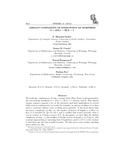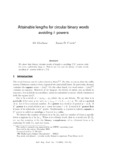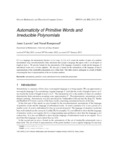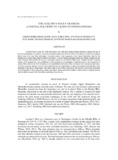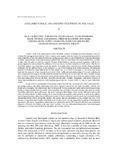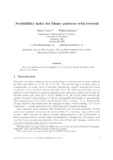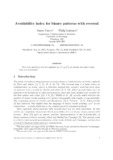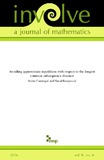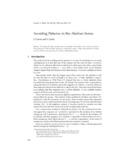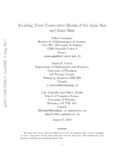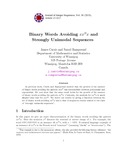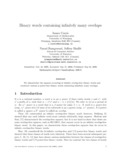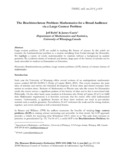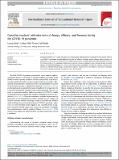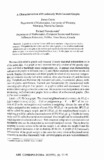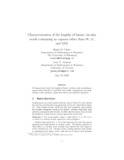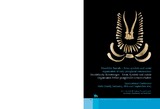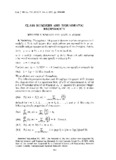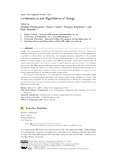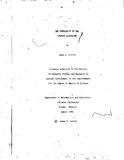Browsing Department of Mathematics and Statistics by Title
Now showing items 1-20 of 73
-
Abelian complexity of fixed point of morphism 0 ↦ 012, 1 ↦ 02, 2 ↦ 1
(Integers, 2014-02-20)We study the combinatorics of vtm, a variant of the Thue-Morse word generated by the non-uniform morphism 0 ↦ 012, 1 ↦ 02, 2 ↦ 1 starting with 0. This infinite ternary sequence appears a lot in the literature and finds ... -
Attainable lengths for circular binary words avoiding k-powers
(The Belgian Mathematical Society, 2005)We show that binary circular words of length n avoiding 7/3+ powers exist for every sufficiently large n. This is not the case for binary circular words avoiding k+ powers with k < 7/3 -
Automaticity of Primitive Words and Irreducible Polynomials
(Discrete Mathematics and Theoretical Computer Science, 2013)If L is a language, the automaticity function AL(n) (resp. NL(n)) of L counts the number of states of a smallest deterministic (resp. non-deterministic) finite automaton that accepts a language that agrees with L on all ... -
The Aveline's Hole 9 Cranium: A Partial Solution to a Long Standing Enigma
(University of Bristol Spelaeological Society, 2012)Aveline's Hole is both one of the best-known sites with early human skeletal material in Britain and one of the most problematic in its history. First discovered and explored at the close of the 18th century, it yielded ... -
Avelines's Hole: An Unexpected Twist in the Tale
(University of Bristol Spelaeological Society, 2019)Aveline’s Hole is the largest known Early Mesolithic cemetery in Britain, previously thought to have no evidence for subsequent burial activity. Thus, it came as some surprise when the results of a recent ancient human DNA ... -
Avoidability index for binary patterns with reversal
(2017)For every pattern p over the alphabet {x,x^R,y,y^R}, we specify the least k such that p is k-avoidable. -
Avoidability index for binary patterns with reversal
(The Electronic Journal of Combinatorics, 2016-02-19)For every pattern p over the alphabet {x, x^R, y, y^R}, we specify the least k such that p is k-avoidable. -
Avoiding approximate repetitions with respect to the longest common subsequence distance
(Mathematical Sciences Publishers, 2015-09-17)Ochem, Rampersad, and Shallit gave various examples of infinite words avoiding what they called approximate repetitions. An approximate repetition is a factor of the form x x', where x and x' are close to being identical. ... -
Avoiding Patterns in the Abelian Sense
(Canadian Mathematical Society, 2001-08)We classify all 3 letter patterns that are avoidable in the abelian sense. A short list of four letter patterns for which abelian avoidance is undecided is given. Using a generalization of Zimin words we deduce some ... -
Avoiding three consecutive blocks of the same size and same sum
(Association of Computing Machinery, 2014-04)We show that there exists an infinite word over the alphabet {0,1,3,4} containing no three consecutive blocks of the same size and the same sum. This answers an open problem of Pirillo and Varricchio from1994. -
Binary Words Avoiding xxRx and Strongly Unimodal Sequences
(2015-09-14)In previous work, Currie and Rampersad showed that the growth of the number of binary words avoiding the pattern xxxR was intermediate between polynomial and exponential. We now show that the same result holds for the ... -
Binary Words Containing Infinitely Many Overlaps
(The Electronic Journal of Combinatorics, 2006-09-22)We characterize the squares occurring in infinite overlap-free binary words and construct various α power-free binary words containing infinitely many overlaps. -
The Brachistochrone Problem: Mathematics for a Broad Audience via a Large Context Problem
(Montana Council of Teachers of Mathematics & Information Age Publishing, 2008)Large context problems (LCP) are useful in teaching the history of science. In this article we consider the brachistochrone problem in a context stretching from Euclid through the Bernoullis. We highlight a variety of ... -
Canadian teachers' attitudes toward change, efficacy, and burnout during the COVID-19 pandemic
(Elsevier, 2020-11-19)Canadian teachers (N = 1626) took part in a longitudinal, national survey conducted at two points early in the COVID-19 pandemic. Results indicated that teacher efficacy, attitudes toward change, and perceptions of ... -
A Characterization of Fractionally Well-Covered Graphs
(Ars Combinatoria, 1991)A graph is called well-covered if every maximal independent set has the same size. One generalization of independent sets in graphs is that of a fractional cover -- attach nonnegative weights to the vertices and require ... -
Characterization of the lengths of binary circular words containing no squares other than 00, 11, and 0101
(2020-05-19)We characterize exactly the lengths of binary circular words containing no squares other than 00, 11, and 0101. -
A chrono-geographic look at Mesolithic burials: an initial study
(Landesamt für Denkmalpflege und Archäologie Sachsen-Anhalt, 2016)Over the past decade we have focused on two interrelated topics within Mesolithic burial studies, the relationship between burial number and burial date, and the chronology of Mesolithic sites with burials. Related to this ... -
Class Numbers and Biquadratic Reciprocity
(Cambridge University Press, 1982) -
Combinatorics and Algorithmics of Strings
(Dagstuhl Publishing, 2014-03-09)Strings (aka sequences or words) form the most basic and natural data structure. They occur whenever information is electronically transmitted (as bit streams), when natural language text is spoken or written down (as words ... -
The Complexity of the Simplex Algorithm
(Carleton UniversityCarleton University, 1984-08)The thesis begins by giving background in linear programming and Simplex methods. Topics covered include the duality theorem, Lemke's algorithm, and the pathological programs of Klee-Minty. Because of the bad behaviour ...

